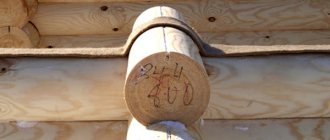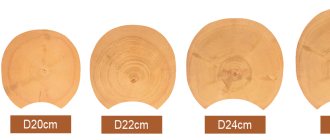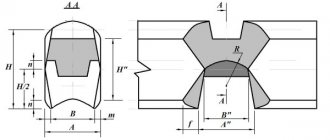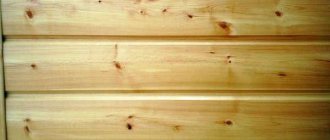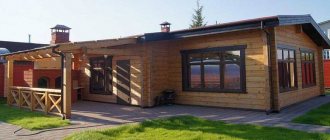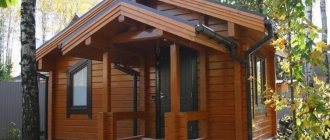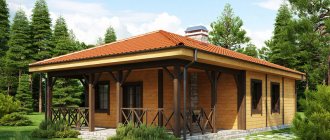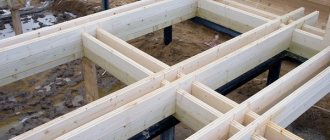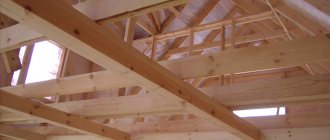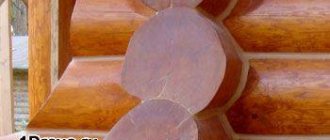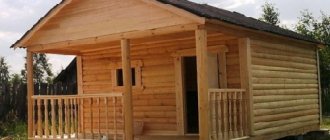Jute insulation is used in construction from rounded and chopped logs, as well as regular and profiled timber.
Modern people have long been accustomed to concrete cells in high-rise buildings with their gray walls - apartments. And houses are built mainly from brick or foam concrete. Accordingly, for insulation, non-natural materials are increasingly being used, which, although harmless to humans, are still chemicals. Today we will tell you about jute inter-crown insulation for wooden houses. The modern trend is such that they prefer to build country houses from timber or logs, wanting to immerse themselves in some kind of primitiveness. Houses for living are made of wood less often. Also read: “Options for installing heating for a wooden house.”
According to reviews from the owners of such houses, you need to get used to living in a tree and not everyone can do it. Many people end up covering the walls with plaster and gluing wallpaper, and this ends the desire for primitiveness; urbanization has penetrated too deeply. But those who appreciate a wooden house know how important environmental friendliness is. Therefore, to insulate crowns, it is better to use natural materials, such as inter-crown insulation made of jute.
Types and features of jute insulation
Before you lay jute on timber, you should become more familiar with the varieties and features of this material. It is of natural origin, so it is close to dry wood. We can consider that jute is a dry grass, a spinning crop that successfully replaces flax.
Modern jute thermal insulation has excellent characteristics, including:
- ability to seal joints;
- biological inertia;
- no unpleasant odor;
- tight fit to timber and logs;
- vapor permeability;
- rot resistance.
Properties of jute as insulation
Jute insulation is considered the best. Its advantage is its ability to absorb and retain excess moisture. When climate conditions change, it releases it back into the atmosphere without consequences. At the same time, the material “breathes” and blocks infrared and ultraviolet radiation. When used, a favorable comfortable microclimate is created in the house.
At 80% humidity, jute insulation remains dry to the touch.
In addition, the material has the following advantages:
- Eco-friendly. Jute is a natural material. It does not contain harmful compounds.
- Long lasting. With high-quality installation, jute insulation lasts as long as the wooden building itself.
- Reliable. The material is resistant to ultraviolet radiation and moisture.
- Has an attractive appearance. Jute is similar in color to wood, which makes it look aesthetically pleasing when used in crown joints.
- Easy to install. To install insulation, you do not need any special tools, special knowledge or experience. It has a uniform density and fills space well.
- Seals seams. Just like wood, jute contains a resinous substance called lingin. Thanks to this, the surfaces stick together.
- Tough enough. The material is minimally subject to compression and retains its given shape well.
Fun fact: jute fiber does not attract insects or rodents, and birds do not steal it to build nests.
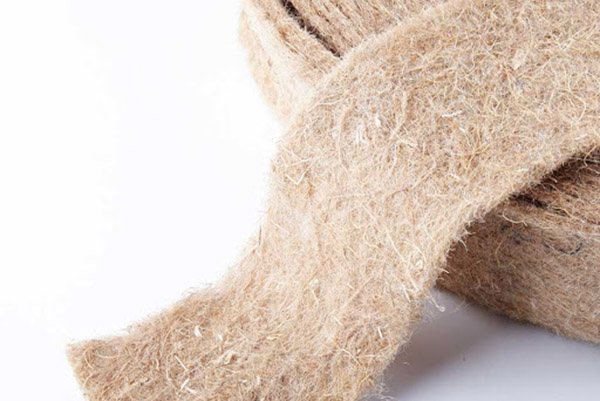
Additional benefits
Jute insulation is also quite dense. If you purchase high-quality jute, its density will be 60 g/m2, while the layer thickness can be up to 10 mm. The fiber length does not exceed three centimeters.
You can find jute insulation in several varieties; in the first case, felt is added to the material in an amount of up to 15%, in the second - flax - up to 50%. Pure jute and jute with admixtures of flax are produced in rolls of different widths.
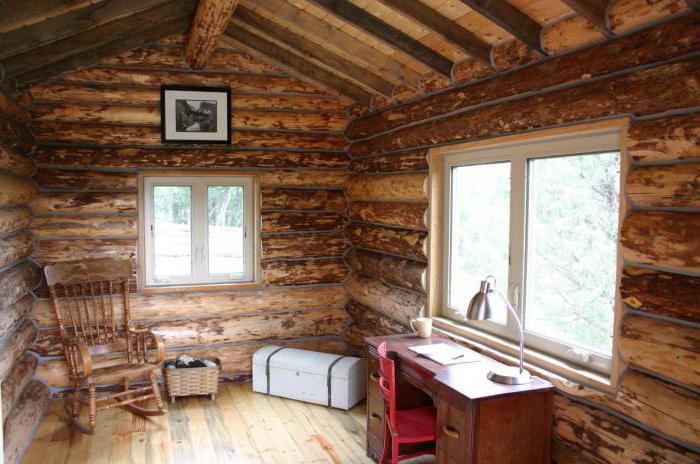
Types and characteristics of jute sealant
Jute inter-crown insulation is a material of plant, that is, natural origin, therefore it has qualities close to dry wood. In fact, it is dry grass, since the jute plant belongs to the herb family. This spinning crop came to replace flax, but if you dig deeper, you will find out that the first insulation material for the construction of log houses was moss.
This is exactly the moss that grows in the swamps of the northern regions of our homeland. It was used for lack of an alternative, and also because it has antiseptic properties. Modern jute insulation has characteristics of a completely different level:
- ensures a tight fit of logs or beams;
- seals joints;
- allows steam to pass through, thereby allowing the wood to dry;
- fungus does not grow in it;
- it does not rot because it contains a lot of lignin;
- has a pleasant golden color, which is important for caulking.
Lignin is a substance as strong as concrete (woody cell membranes). Popularly called plant resin. We are talking about the resin that is found in deciduous trees (18-24%), and in coniferous trees (27-30%), and even in grasses with algae.
In addition, the density of jute insulation is also different. The characteristics and installation method directly depend on this value. Good jute has a density of 600 g/m. sq. and layer thickness from 0.8 to 10 mm. In this case, the length of the fibers is no more than 2.5-3 cm. Typically, the length of the fibers is important.
Those who have experienced the operation of a wooden house made of logs or profiled or laminated timber know that birds love to pull out the inter-crown insulation from the joints. The jute seal eventually becomes a building material for their nests. So, if the length of the fibers is not too long (up to 3 cm), the birds do not want to make a nest from it, probably the latter is not too strong. And if there is a more convenient alternative (grass, sticks or rags), picking at the crowns of houses is labor-intensive and ineffective. Interesting article: “Several recommendations for comprehensive insulation of a wooden house with your own hands.”
Jute sealant is produced not only in its pure form, but also with admixtures of other materials:
- felt – up to 15%;
- flax – up to 50%.
Pure jute, felt material and flax jute are produced in rolls of different widths, thicknesses and densities. In addition, there is a special tow for caulking joints. It looks like flax for sealing threaded connections for metal hot water and heating pipes.
In the most advanced circles, smart home heating has long become almost a standard. Having a cottage with a large area, it is difficult to monitor everything single-handedly, it takes a lot of time. That's why technology came to the rescue.
How a vertical two-pipe heating system for a cottage differs from a horizontal one is clearly and intelligibly written here.
Selection and installation
Before you lay jute on the timber, it is important to choose the right material. It is necessary to begin insulation work only some time after the completion of the house. During this period, the wood will reach the desired level of humidity, and the walls will shrink. But even after thermal insulation, the inter-crown insulation will allow moisture to pass through, which comes from the timber or log.
Using thermal insulation, it will be possible to fill the joints to prevent the formation of cold bridges. Choosing a thicker seal will ensure ease of installation. The material should be placed in the connecting groove so that it does not move, and after it is pressed with a log, the insulation must be fixed with a stapler, installing the fasteners at a distance of 250 mm. If you purchased a ribbon that is too wide, then its edges must be folded inward. The tape should also be located in the bowls.
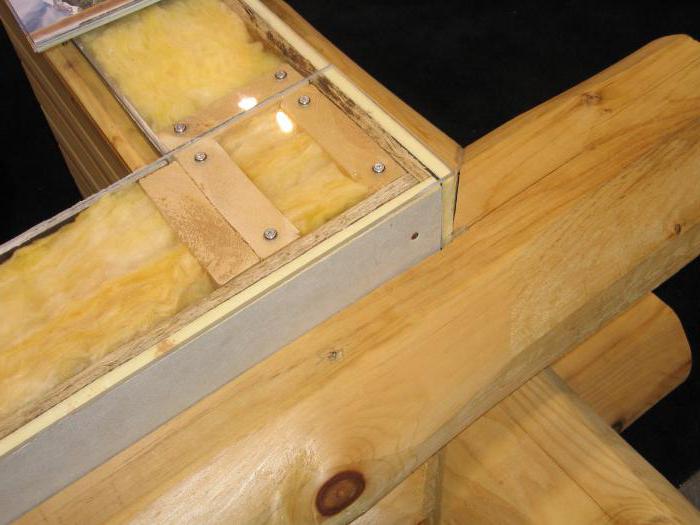
Selection criteria for Polyterm
The material appeared on the market recently, it is produced by different companies, so when purchasing you need to pay attention to the following features of the product:
- high-quality insulation Polytherm should have a shade close to freshly cut wood;
- no pungent odor;
- uniformity and equal thickness of the tape along the entire length.
In order for Polytherm (inter-crown insulation made of synthetic material) to fully exhibit its properties, you need to buy tapes slightly wider than the cross-section of the timber or the width of the hewn log.
Features of caulk
Laying jute on timber is a prerequisite for insulation. Some craftsmen believe that there is no need to caulk joints, but in practice this procedure is still required. Once the log has settled, it can be twisted violently. On one side, a 0.5 cm gap is formed, while on the other side the seal is tightly clamped.
In this case, caulking helps, in which it is best to use tow or tape. This must be done only a year and a half after the construction of the house. In some cases, laying inter-crown insulation does not involve tucking in the ends of an overly wide tape. In this case, the ends will hang on both sides. After the house has settled, the hanging ends can be driven into the joints.
However, in this case, you may encounter a problem, which is expressed in the fact that after 2 years the seal will deteriorate under the influence of ultraviolet radiation, moisture and wind. In the end, you will have to hammer in low-quality material between the joints, which does not always allow for complete sealing.
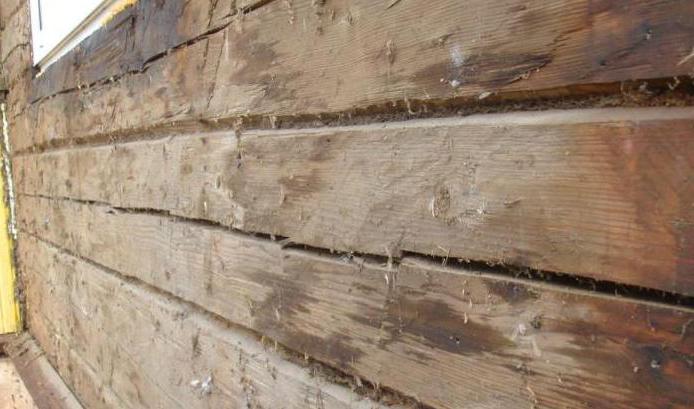
Why choose jute sealant?
If you have not yet decided whether jute will be laid on timber or some other material, then you should familiarize yourself with this issue in more detail. First of all, they begin the construction of a wooden house, pursuing the main goal - environmental friendliness. To caulk the joints between the crowns, you can use other materials, namely:
- moss;
- flax wool;
- liquid acrylic sealants;
- linen rope.
One of the advantages of jute over the above materials is that it does not wrap around the drill. The insulation has such a structure that when drilling, the metal does not adhere to the thermal insulation, which is very convenient when working. In addition, jute is ready to last exactly as long as a wooden house will last. The declared service life of thermal insulation is 75 years.
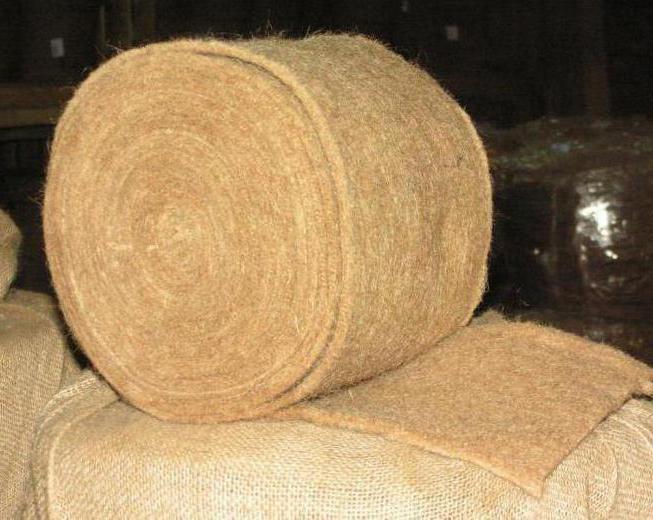
Some owners of wooden houses do not use jute to insulate the crowns of timber, preferring acrylic sealant. Experts believe that the feasibility of this approach may be questionable. Although the joints will not allow the cold to pass through, the walls will lose their ability to breathe. The steam will stop circulating and the wood may begin to rot.
Laying features
You can independently lay jute on timber; the specifics of this work require compliance with several rules. It is important to place the tape on the connecting groove. It should fill the space of the bowls.
The material is laid without bends if the house is built from ordinary logs or glued profiled timber. Sometimes the insulation is folded on both sides; this solution is suitable for houses made of chopped or rounded logs. The material can also be laid with one-sided bending; this method is suitable for structures made of planed timber.
It is also important to take into account the dependence of the thickness of the insulation on the wall material. If it is intended to use laminated veneer lumber in construction, then the insulation should have a thickness of 0.5 cm. When the system is based on a rounded log, it is necessary to purchase insulation with a thickness of 0.8 to 1 centimeter. If you plan to use chopped logs, then the jute should have a thickness of up to 1.5 cm.
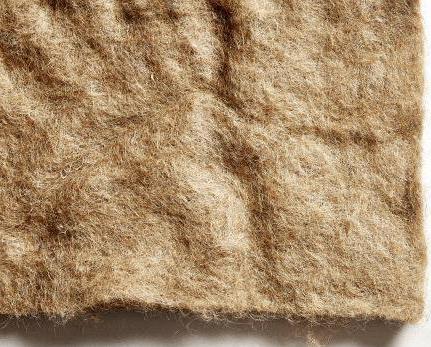
Work technology
Quite often, novice craftsmen wonder how to properly lay timber when jute insulation is used. The work will consist of several stages. The first involves the distribution of insulation along the inter-crown grooves; at the next stage, the material is fixed using a stapler. Next, the next log or timber is laid, and at the end of the crowns the thermal insulation is cut with scissors.
Once the installation of the frame is completed, the protruding parts of the insulation can be caulked inside. It is important to pay special attention to the fact that the grooves must be completely filled with thermal insulation. When installing log walls that will be assembled manually, it is necessary to select thermal insulation depending on the quality of the roof joints. The neater and denser they are, the easier it will be to insulate the walls. But, as practice shows, log elements assembled by hand are of average quality. In this case, it is important to know how to properly lay jute on timber.
The mentioned insulating material is combined with an analogue in the form of tow. Lay out the thermal insulation with your hands and place it in the cuts and grooves. In the place where the thickness of the jute tape is sufficient, you can fix the tow with a stapler.
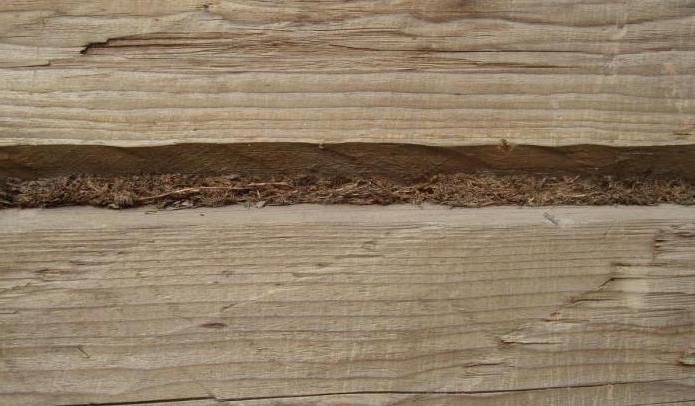
Polyterm manufacturers and cost comparison
The cost of Polytherm from different manufacturers is almost the same, but prices may be affected by the distance of a settlement from the central regions of the country. Manufacturers of Polytherm are:
- the Termopol company, which produces other synthetic materials;
- the Winter House group of companies produces Polytherm insulation in slabs and in the form of tape;
- The production enterprise “Center of EcoInsulation” specializes in the production of various types of thermal insulation and is considered the leading manufacturer of Polyterm in Russia.
Recommendations for laying jute between rounded logs and beams without longitudinal grooves
Quite often lately, home craftsmen have been laying jute. Profiled timber or rounded logs are insulated in one layer. When using conventional timber, thermal insulation must be laid in two layers. This rule will be more applicable to timber houses that do not have longitudinal grooves. This building material does not have recesses for insulation; it is not possible to form a thermal lock in it, so it will be subject to blowing.
